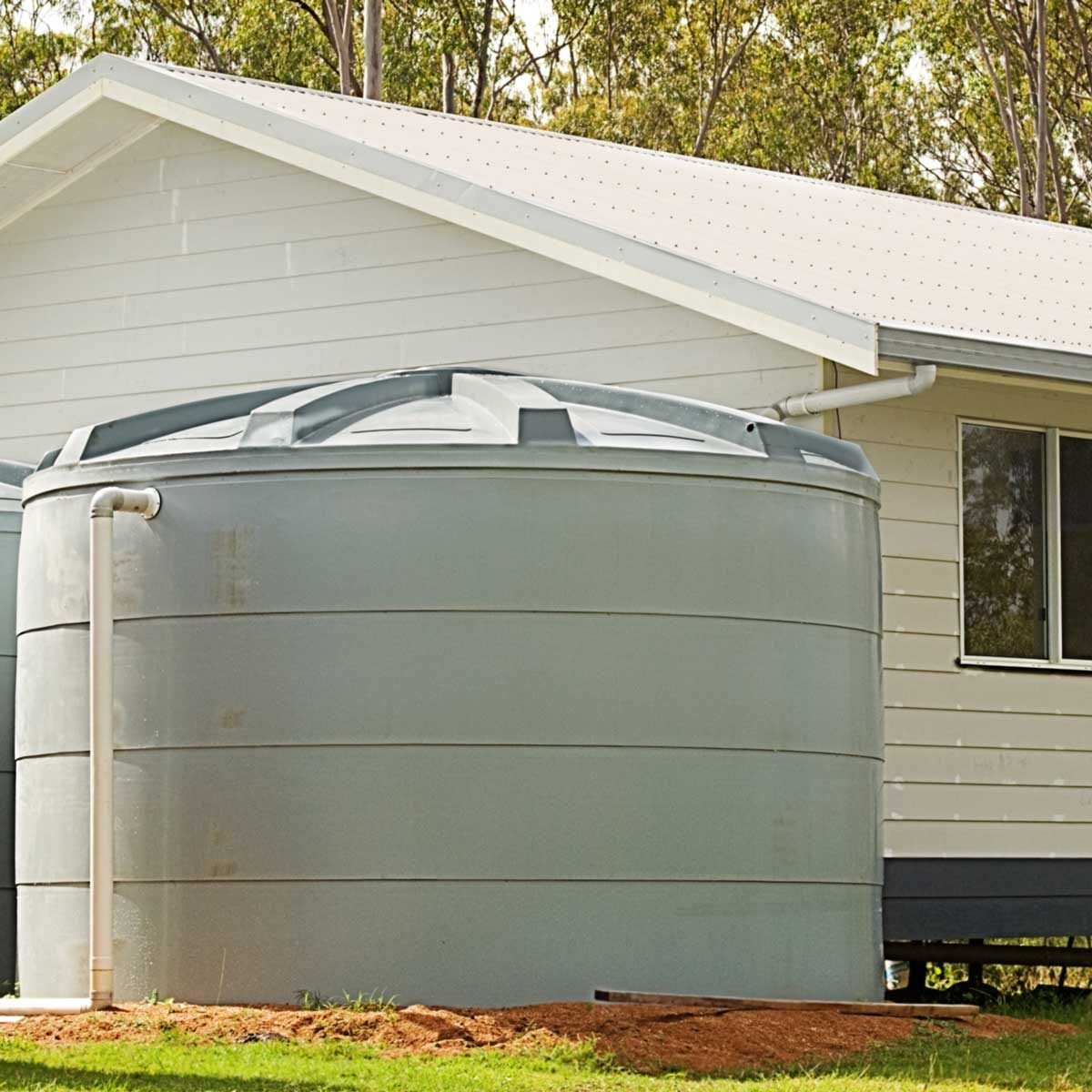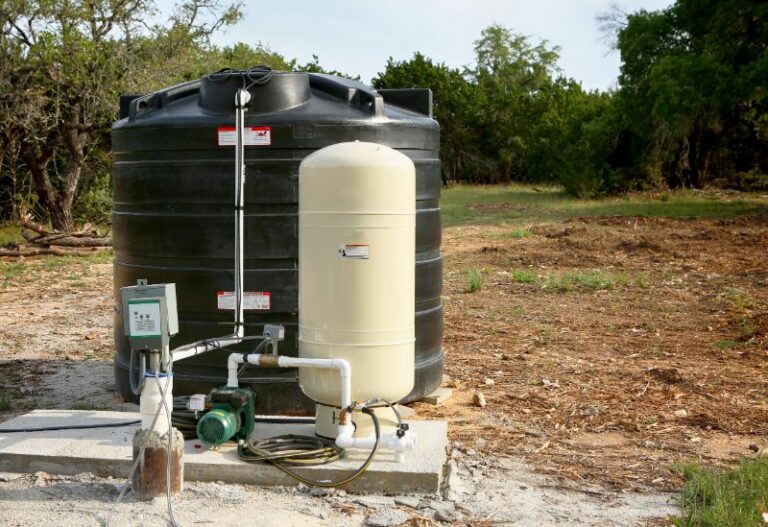Living off the grid water supply is a crucial aspect of sustainable living, offering independence and resilience in remote or off-grid locations. This comprehensive guide explores various water sources, collection and storage methods, purification techniques, and distribution strategies for a reliable water supply off the grid.
From rainwater harvesting to groundwater extraction, understanding the pros and cons of each water source is essential. Efficient collection and storage systems, such as cisterns and above-ground tanks, ensure adequate water availability during dry seasons and emergencies.
Water Sources: Living Off The Grid Water Supply

Water is essential for life, and having a reliable water supply is crucial for off-grid living. There are several sources of water available, each with its own advantages and disadvantages.
One common source of water for off-grid living is rainwater. Rainwater harvesting involves collecting and storing rainwater for later use. The main advantage of rainwater is that it is free and relatively easy to collect. However, rainwater can be contaminated with bacteria and other pollutants, so it is important to treat it before drinking.
Additionally, rainwater collection is dependent on rainfall patterns, which can be unpredictable in some areas.
Another source of water for off-grid living is groundwater. Groundwater is water that is stored underground in aquifers. Groundwater is generally cleaner than rainwater, but it can be more difficult to access. Drilling a well is typically required to access groundwater, which can be expensive.
Additionally, groundwater can be contaminated with minerals or other pollutants, so it is important to test it before drinking.
Surface water is another potential source of water for off-grid living. Surface water includes lakes, rivers, and streams. Surface water is generally easy to access, but it can be contaminated with bacteria and other pollutants. Additionally, surface water can be affected by drought or flooding, which can make it an unreliable source of water.
The best source of water for off-grid living will depend on the specific location and the needs of the household. It is important to consider the reliability, accessibility, and treatment requirements of each source before making a decision.
Water Collection and Storage

Ensuring a reliable water supply off the grid requires efficient water collection and storage systems. Let’s explore various methods for collecting and storing water to sustain your off-grid lifestyle.
Rainwater Harvesting
Rainwater harvesting is a primary source of water for off-grid living. Here are some common methods:
- Rooftop Harvesting:Installing gutters and downspouts on rooftops allows you to collect rainwater from the roof surface. The collected water can be stored in cisterns or above-ground tanks.
- Ground-Level Collection:Diverting rainwater runoff from slopes or hillsides into collection basins or storage tanks is another effective method.
- Cisterns:Cisterns are underground or above-ground tanks used to store rainwater. They can range in size from small barrels to large concrete or plastic tanks.
Water Storage
Proper water storage is crucial to ensure a sufficient supply. Here are some options:
- Above-Ground Tanks:Above-ground tanks, made of materials like plastic or metal, are commonly used for storing rainwater. They can be placed on elevated platforms or mounted on the ground.
- Underground Reservoirs:Underground reservoirs are large, buried tanks or vaults that store water below ground. They are ideal for long-term storage and can protect water from contamination.
- Water Filtration Systems:Installing water filtration systems ensures the quality and safety of stored water. Filtration systems can remove impurities, contaminants, and microorganisms.
Ensuring Adequate Water Supply
To ensure a reliable water supply during dry seasons or emergencies, consider the following:
- Water Conservation:Implementing water conservation practices, such as using low-flow appliances and fixtures, can significantly reduce water consumption.
- Backup Water Sources:Having alternative water sources, such as nearby springs or wells, can provide a backup supply during periods of low rainfall.
- Emergency Water Storage:Maintaining an emergency water supply of at least 1 gallon per person per day for several days is recommended in case of emergencies.
Water Purification and Treatment
Water purification and treatment are essential for off-grid living, as untreated water can pose significant health risks. Various methods exist to purify and treat water, each with its advantages and disadvantages.
Water purification involves removing contaminants and impurities, while water treatment focuses on eliminating harmful microorganisms.
Boiling
Boiling is a simple and effective method that kills bacteria and viruses. To boil water, bring it to a rolling boil for at least 1 minute at sea level or longer at higher altitudes.
Advantages:
- Effective against a wide range of microorganisms
- Inexpensive and accessible
Disadvantages:
- Can alter the taste of water
- Requires a heat source
Filtration
Filtration involves passing water through a filter to remove particles and contaminants. Filters can be made from various materials, such as ceramic, activated carbon, and reverse osmosis membranes.
Advantages:
- Effective against sediment, bacteria, and protozoa
- Portable and easy to use
Disadvantages:
- May require regular cleaning or replacement
- Not effective against viruses
Disinfection
Disinfection involves using chemicals, such as chlorine or iodine, to kill microorganisms. This method is often used in combination with other purification methods.
Advantages:
- Effective against a wide range of microorganisms
- Inexpensive and widely available
Disadvantages:
- Can alter the taste of water
- May not be suitable for long-term use
Reverse Osmosis, Living off the grid water supply
Reverse osmosis is a highly effective method that removes almost all impurities and contaminants from water. It involves forcing water through a semi-permeable membrane that allows water molecules to pass through but blocks larger particles.
Advantages:
- Removes a wide range of contaminants, including bacteria, viruses, and heavy metals
- Produces high-quality water
Disadvantages:
- Expensive to purchase and maintain
- Requires electricity or manual pumping
Water Distribution and Usage

Ensuring a reliable and efficient water supply off the grid requires careful planning for distribution and usage. This involves designing a system that considers factors like distance, elevation, and pressure, as well as implementing water conservation and efficiency measures.
Water Distribution
Distributing water throughout an off-grid property requires a well-designed system that ensures adequate pressure and flow rate to all fixtures and appliances. Factors to consider include:
- Distance:The distance between the water source and the furthest fixtures will determine the pipe size and pump capacity required.
- Elevation:Changes in elevation can affect water pressure, so it’s important to consider the vertical distance between the water source and the fixtures.
- Pressure:The water pressure at each fixture should be sufficient for its intended use. A pressure regulator may be necessary to maintain consistent pressure throughout the system.
Water Conservation
Conserving water is essential for sustainable living off the grid. Techniques include:
- Rainwater harvesting:Collecting and storing rainwater for non-potable uses, such as irrigation or flushing toilets.
- Low-flow appliances:Using appliances that are designed to reduce water consumption, such as low-flow toilets and showerheads.
- Drip irrigation:A water-efficient irrigation method that delivers water directly to the roots of plants, minimizing evaporation and runoff.
Water Usage Efficiency
Maximizing water usage efficiency involves implementing strategies that reduce water waste. Ideas include:
- Rainwater gardens:Designed to capture and infiltrate rainwater, reducing runoff and recharging groundwater.
- Composting toilets:These toilets do not require water, eliminating the need for a traditional flush toilet.
- Greywater systems:Reusing water from sinks, showers, and bathtubs for non-potable purposes, such as irrigation.
Closing Summary

Living off the grid water supply requires careful planning and implementation. By considering water sources, collection methods, purification techniques, and distribution strategies, individuals can achieve self-sufficiency and minimize their reliance on external water sources. This guide provides a roadmap for establishing a sustainable and reliable water supply off the grid.
FAQ Corner
How can I ensure a reliable water supply off the grid?
Diversifying water sources, implementing efficient collection and storage systems, and utilizing water purification methods are crucial for a reliable water supply off the grid.
What are the advantages of rainwater harvesting?
Rainwater harvesting is a sustainable and cost-effective way to collect and store water, reducing reliance on external sources and providing a backup during dry seasons.
How can I purify water off the grid?
Boiling, filtration, disinfection, and reverse osmosis are effective water purification methods for off-grid living, removing contaminants and ensuring safe drinking water.